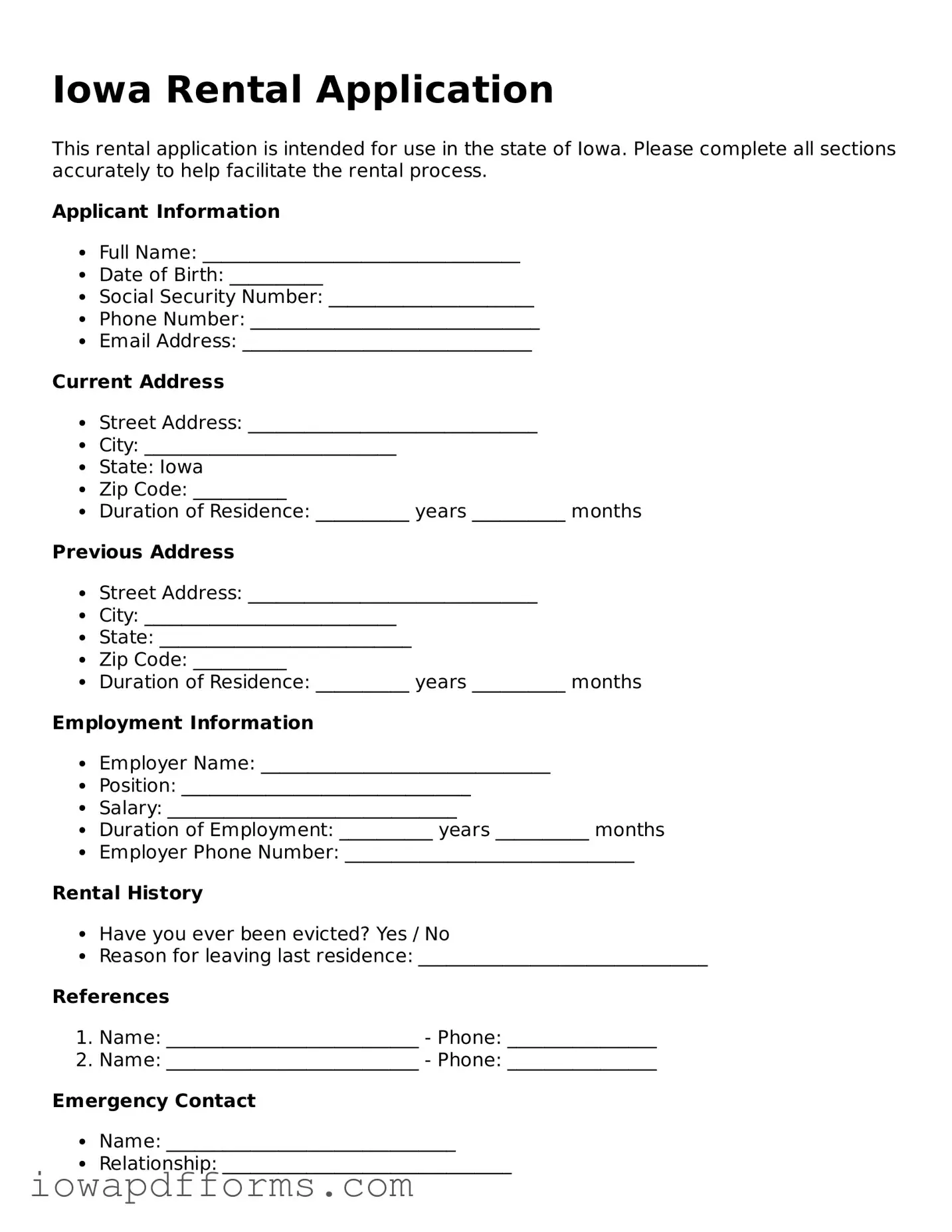The Iowa Rental Application form shares similarities with the standard lease agreement. Both documents are essential in the rental process, serving to establish the terms of the rental arrangement. The lease agreement outlines the rights and responsibilities of both the landlord and tenant, while the rental application collects pertinent information about the prospective tenant. This information can include employment history, rental history, and references, which help landlords make informed decisions about potential tenants.
Another document comparable to the Iowa Rental Application is the tenant screening form. This form is often used by landlords to gather specific information that aids in evaluating a tenant's suitability. Like the rental application, it typically requests personal details, credit history, and background checks. The primary goal of both documents is to ensure that landlords can select responsible tenants who are likely to meet their obligations under the lease.
The roommate agreement is also similar to the Iowa Rental Application, albeit with a different focus. This document is used when multiple tenants share a rental unit. It outlines the responsibilities and expectations of each roommate, such as rent payment and household duties. While the rental application assesses individual qualifications, the roommate agreement establishes the dynamics of shared living arrangements, emphasizing the importance of clear communication among all parties involved.
The rental history verification form serves a similar purpose as the Iowa Rental Application. This document is often used by landlords to confirm the rental history of a potential tenant. It requests information from previous landlords regarding payment history, lease violations, and overall conduct as a tenant. Just as the rental application provides a snapshot of a tenant's background, the rental history verification form offers insights into their past rental experiences.
The employment verification form is another document that parallels the Iowa Rental Application. This form is used to confirm a tenant's employment status and income level. Landlords often require this information to ensure that prospective tenants have the financial means to pay rent consistently. While the rental application collects this information directly, the employment verification form provides an additional layer of assurance regarding a tenant's financial stability.
The credit application is closely related to the Iowa Rental Application as well. This document specifically focuses on a tenant's creditworthiness. It typically requires the tenant to provide consent for a credit check, allowing landlords to assess the applicant's financial behavior. Both forms aim to evaluate the risk associated with renting to a particular individual, though the credit application delves deeper into financial history.
Understanding the various rental documents is crucial for landlords and tenants alike. For instance, while the Iowa Rental Application is essential for collecting tenant information, resources like the Texas Documents provide standardized forms that can streamline the process of real estate transactions, ensuring that all parties involved are well-informed and protected.
The background check authorization form is another document that aligns with the Iowa Rental Application. This form permits landlords to conduct background checks on potential tenants, which may include criminal history, eviction records, and other relevant information. While the rental application gathers initial data, the background check authorization form allows for a more thorough investigation into a tenant's past, helping landlords make informed decisions.
Finally, the move-in checklist is similar in that it is often used in conjunction with the Iowa Rental Application. While the rental application focuses on tenant qualifications, the move-in checklist is a tool for documenting the condition of the rental unit at the time of occupancy. This checklist helps prevent disputes over security deposits by ensuring that both landlords and tenants have a clear understanding of the property's condition before the tenant moves in.
